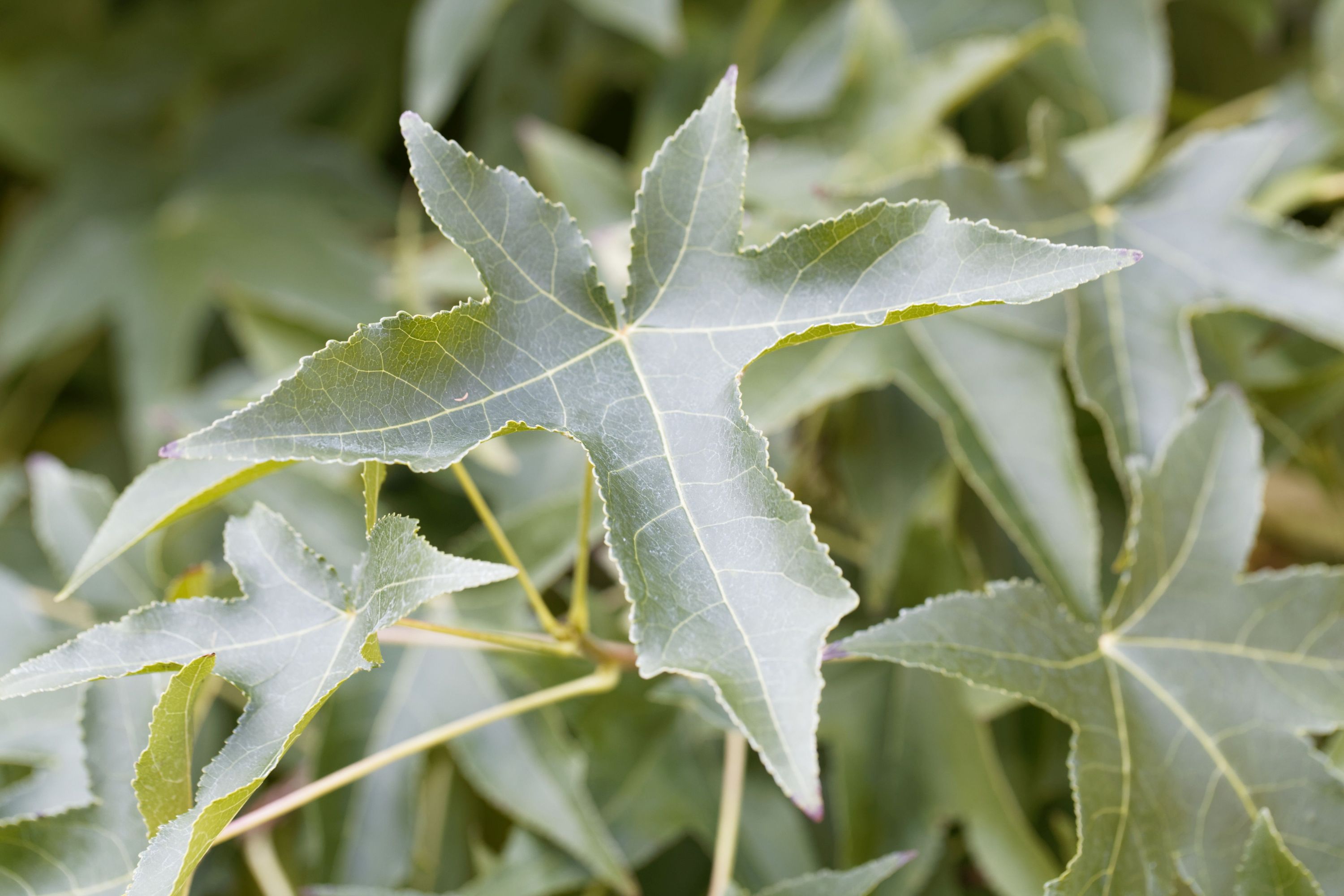Oriental sweet gum
(Liquidambar orientalis)

Description
Liquidambar orientalis, commonly known as oriental sweetgum or Turkish sweetgum, is a deciduous tree in the genus Liquidambar, native to the eastern Mediterranean region, that occurs as pure stands mainly in the floodplains of southwestern Turkey and on the Greek island of Rhodes. Oriental sweet gum is a deciduous tree, 30–35 m (98–115 ft) in height with a trunk of 100 cm (39 in) in diameter. The unisexual flowers bloom from March to April. The fruits ripen in November to December and the seeds are wind dispersed. The tree is very attractive and especially valued for its colourful autumn leaves. Oriental sweet gum trees favour an elevation of between 0–400 m (0–1,312 ft), a mean annual rainfall of 1,000–1,200 mm (39–47 in) and a mean annual temperature of 18 °C (64 °F). The tree's optimal growth is on rich, deep and moist soils such as bogs, river banks and coastal areas but it is also able to grow on slopes and dry soil. The forests of this Tertiary relict endemic taxon are found notably within a specially protected area between Dalyan and Köyceğiz in Muğla Province, where a 286 ha (710 acres) zone is set aside as a nature reserve and arboretum for the preservation of the species. A large stand also surrounds Marmaris. These two areas are the better known oriental sweetgum forests due to their respective regions also being prominent centers of tourism, although a big population covering nearly 100 ha (250 acres) is also found in an inland region within Aydın Province extending between Çine, Köşk and Umurlu districts. Yet another sweetgum forest area of 88.5 ha (219 acres) under protection is situated in Burdur's depending district of Bucak alongside Karacaören dam reservoir on the road to Antalya.The trees are also found locally in Denizli's depending districts of Beyağaç and Tavas. The total area of pure sweetgum forests in Turkey covers 1,348 ha (3,330 acres), all in the southwestern regions of the country. The present-day extension corresponds to a marked decrease since the 1940s level of 6,000–7,000 ha (15,000–17,000 acres), although the protective measures and infrastructure in place since the 1980s helped stop loss of stands and led to slight improvements.
Taxonomic tree:







